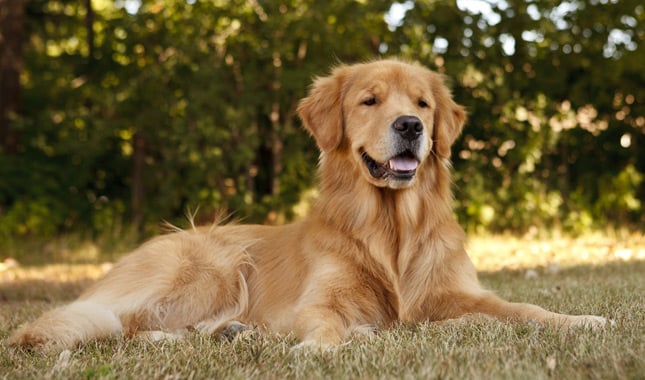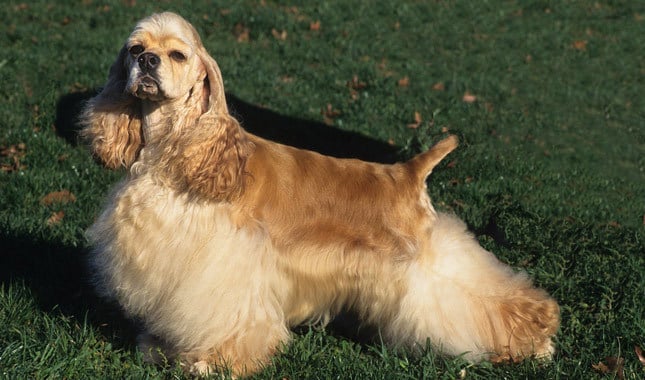These 11 Demanding Dog Breeds Might Be More Than You Can Handle
Bringing a dog into your home is a big commitment—one that often lasts 10 to 15 years or more. While all dogs need love, attention, and care, not all breeds are created equal when it comes to the demands they place on their owners.
Some pups are perfectly content with a daily walk and a cuddle on the couch. Others? They’ll need hours of intense exercise, constant mental stimulation, firm training, and vigilant supervision to stay happy and healthy.
These high-maintenance breeds aren’t necessarily bad dogs—in fact, many are brilliant, loyal, and athletic. But they thrive under specific conditions that the average dog owner might not be able to provide. Without proper outlets, their energy and intelligence can turn into destructive behaviors, separation anxiety, or unmanageable stubbornness.
Before you fall for those fluffy ears or piercing puppy eyes, it’s important to ask yourself: Am I ready for a dog that might outwork me, outthink me, and outlast my patience?
If you’re looking for a low-key companion, the dogs on this list may not be your best match. Here are 11 popular (and often misunderstood) dog breeds that are simply too demanding for most people—and what makes them such a challenge.
1. Border Collie: The Canine Einstein
Renowned for their extraordinary intelligence, Border Collies need constant mental challenges to prevent destructive behaviors. These dogs were bred to work all day herding sheep across rugged terrain, and they bring that tireless work ethic into your home.
Without proper stimulation, they’ll find their own projects – redesigning your furniture, landscaping your yard, or creating escape routes. Daily exercise requirements easily exceed two hours, making them unsuitable for apartment living or sedentary owners.
Their intense focus can become problematic, as they may develop obsessive behaviors like chasing shadows or light reflections. First-time dog owners often find themselves overwhelmed by this breed’s relentless energy and problem-solving abilities.
2. Belgian Malinois: The Military-Grade Guardian
Originally developed for police and military work, the Belgian Malinois possesses drive and intensity that few civilian homes can properly channel. These athletic powerhouses can easily clear a six-foot fence and require specialized training from experienced handlers.
Their protective instincts, while valuable in professional settings, often translate to wariness of strangers and potential aggression if not properly socialized. The physical exercise needed to tire a Malinois would exhaust most owners – we’re talking running, not walking, and for miles.
Boredom quickly leads to destructive behaviors that can wreck your home. Without proper guidance, their working drive transforms into problematic behaviors like excessive barking, digging, or chewing through walls.
3. Australian Shepherd: The Backyard Busybody
Don’t let those mesmerizing blue eyes fool you – Australian Shepherds were bred to control stubborn livestock all day long. Their boundless energy and sharp minds require constant direction, or they’ll appoint themselves the managers of your household.
Aussies thrive on having jobs to do and will herd anything that moves – including your children, other pets, or the neighbor’s cat. Their intelligence means they quickly learn how to manipulate situations to their advantage, opening doors, escaping yards, and creating their own entertainment.
Heavy shedding creates a perpetual fur tornado in your home, while their strong herding instincts can lead to nipping at heels. Without proper outlets, their working drive transforms into problematic behaviors that can make family life chaotic.
4. Jack Russell Terrier: The Perpetual Motion Machine
Packed into a small frame is an engine that never stops running. Jack Russell Terriers were designed to chase foxes into their dens, and that tenacity translates to a dog that’s constantly on high alert.
Their energy levels seem supernatural – after an hour of play that would exhaust most dogs, they’re just warming up. Notorious for selective hearing, these terriers often ignore commands when something more interesting catches their attention. Their hunting instincts make them flight risks around small animals, and their digging abilities can transform your yard into a lunar landscape in a matter of hours.
Strong-willed and independent, they require consistent training that matches their intelligence and determination. Many owners surrender these dogs when they can’t handle the combination of energy, stubbornness, and volume.
5. Siberian Husky: The Escape Artist Extraordinaire
Beautiful but wildly independent, Siberian Huskies maintain a strong connection to their wolfish ancestors. Bred to run for dozens of miles pulling sleds in Arctic conditions, suburban living rarely provides enough activity to satisfy their exercise needs.
Famous for their Houdini-like escape abilities, huskies require fortress-like containment systems. They’re master diggers, climbers, and can squeeze through impossibly small gaps.
Their thick double coat creates a hair hurricane during shedding season – twice yearly events that last for weeks. Huskies express themselves through howling conversations that neighbors will definitely notice.
Their independent nature makes training challenging, as they constantly evaluate whether your requests are worth their effort. Without proper outlets, destructive behaviors quickly develop.
6. Akita: The Dignified Diva
Akitas carry themselves with a regal bearing that masks their stubborn determination. Originally bred as guard dogs for Japanese nobility, they make independent decisions about who belongs in their territory – often disagreeing with your assessment of welcome guests.
Their powerful jaws and substantial size (up to 130 pounds) mean even playful moments require careful supervision. Same-sex aggression is common, making multi-dog households challenging. Their aloof nature extends to training sessions, where they may simply decide your commands aren’t worth following.
Grooming requirements are substantial due to their thick double coat and heavy seasonal shedding. Their hunting instincts remain strong, making them potentially dangerous around smaller pets. First-time dog owners frequently underestimate the challenge of earning an Akita’s respect.
7. Weimaraner: The Velcro Hunting Hound
Known as the “gray ghost,” Weimaraners combine extreme athleticism with severe separation anxiety. These hunting dogs were bred to stay close to their handlers all day in the field, creating a breed that panics when left alone – even for short periods.
Their anxiety manifests in destructive behaviors that can include chewing through drywall, destroying furniture, or howling for hours. Exercise needs are extraordinary, requiring daily running beyond what most owners can provide.
Mental stimulation is equally important, as their intelligent minds need regular challenges. Their hunting drive remains strong, making them prone to chasing anything that moves.
Despite their elegance, they’re clumsy indoor companions who regularly clear coffee tables with their powerful tails. Many owners surrender these beautiful dogs when they can’t manage their intense needs.
8. Chow Chow: The Feline Canine
Behind that adorable teddy bear face lies a stubborn, independent spirit more reminiscent of a cat than a dog. Chow Chows don’t exist to please you – they form judgments about what’s worth their effort and rarely change their minds.
Early socialization is absolutely critical, as adult Chows can become aggressive toward strangers without proper exposure. Their grooming needs are extreme, requiring daily brushing to prevent painful mats in their dense double coats.
Health concerns include hip dysplasia, entropion (painful eyelid condition), and heat sensitivity due to their thick fur. Territorial by nature, they can be challenging to integrate with other pets.
Their aloof personality often surprises owners expecting an affectionate companion. While they form strong bonds with their families, they express devotion through quiet presence rather than exuberant displays.
9. Dalmatian: The High-Strung Spotted Speedster
Made famous by Disney, Dalmatians are working dogs with energy levels that would exhaust marathon runners. Originally bred to run alongside horse-drawn carriages for hours, they require substantial daily exercise to prevent destructive behaviors.
Without proper outlets, their high energy transforms into anxiety and hyperactivity. Dalmatians can be stubborn and sensitive, making training a delicate balance of consistency and positive reinforcement.
Their short coat is deceptively high-maintenance, as they shed constantly year-round, covering everything you own with white hairs. Health issues include deafness (affecting up to 30% of the breed) and urinary stones.
Their strong prey drive can make them challenging around smaller pets. Many Dalmatians were surrendered after the Disney films when families discovered the reality behind those adorable spots.
10. Shiba Inu: The Foxy Independent
Internet famous for their “Shiba scream” and meme status, these fox-like dogs present unique challenges. Shibas possess an independent streak that makes training feel like negotiating with a stubborn teenager.
They’re not people-pleasers and often question why they should follow your commands. Their hunting instincts remain strong, making them flight risks around small animals and unreliable off-leash. Twice yearly, they “blow their coat” in spectacular fashion, releasing enough fur to create several new dogs.
Their territorial nature can lead to resource guarding and aggression if not properly addressed. Despite their small size, they require firm boundaries and consistent training.
A cat-like cleanliness and adorable appearance mask a primitive dog that retains many wild instincts. First-time owners often find themselves unprepared for a dog that acts like a roommate rather than a pet.
11. Cane Corso: The Heavyweight Guardian
Weighing up to 120 pounds of solid muscle, the Cane Corso is a powerful mastiff with guarding instincts that remain strong despite domestication. Their protective nature requires extensive socialization to prevent aggression toward visitors, delivery people, or anyone they perceive as threatening.
Their immense strength means even casual interactions need supervision – they can easily knock over children or elderly family members without meaning harm. Training must begin early and remain consistent throughout their lives, as an untrained Corso is a dangerous liability.
Drooling is prolific, covering walls, furniture, and your clothing with sticky residue. While not hyperactive, they need regular exercise to maintain physical and mental health. Their size alone creates challenges in housing, transportation, and managing everyday activities that many owners underestimate.
















